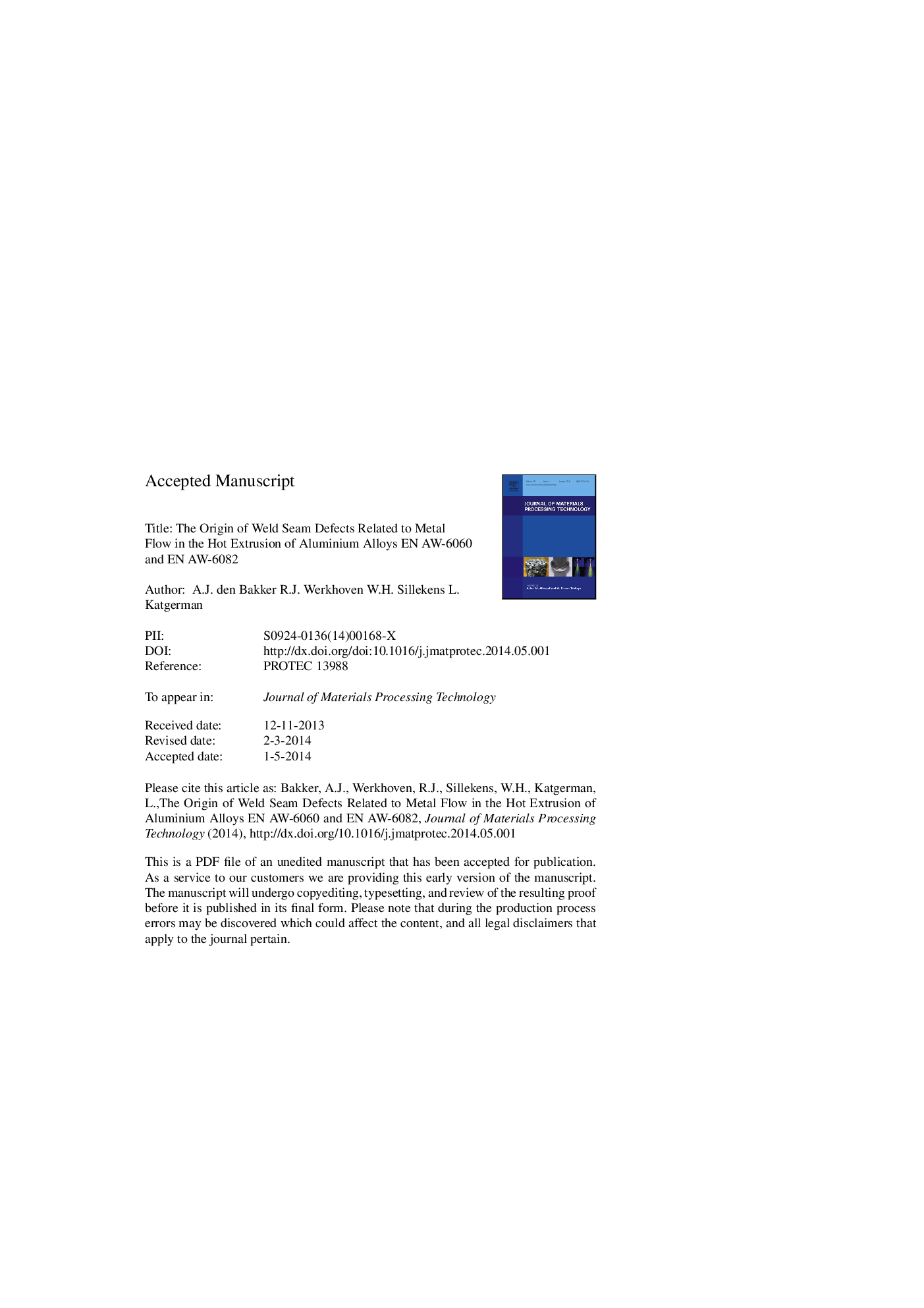| Article ID | Journal | Published Year | Pages | File Type |
|---|---|---|---|---|
| 10417367 | Journal of Materials Processing Technology | 2014 | 28 Pages |
Abstract
Longitudinal weld seams are an intrinsic feature in hollow extrusions produced with porthole dies. As these joins occur along the entire extruded length, it is desirable that these weld seams have a minimal impact on the structural integrity of the extrudate. In particular, defects associated with weld seam formation should be avoided. In this research, the occurrence of defects related to material flow inside the extrusion tooling is studied. In lab-scale experiments, EN AW-6060 and EN AW-6082 aluminium alloy billets are formed into strips by means of the direct hot extrusion process. By utilising model dies with an internal obstruction similar to the supports present in porthole dies, a strip with a central longitudinal weld seam is formed. The effects of different geometries of the weld-chamber and the processing conditions on the quality of the weld seam are investigated. Characterisation is performed through mechanical testing, focusing on the ability of the weld seam area to accommodate plastic deformation, and microstructural analysis provides insight into the defects related to unsound metal flow. Through computer simulations, conditions related to weld seam formation are modelled and correlated with the experimental results. The experimental results demonstrate that metal flow controlled by the die geometry causes defects leading to inferior mechanical performance of the extrudate. It is further argued that current weld seam formation criteria utilised in finite element modelling need enhancement to incorporate these flow related defects.
Related Topics
Physical Sciences and Engineering
Engineering
Industrial and Manufacturing Engineering
Authors
A.J. den Bakker, R.J. Werkhoven, W.H. Sillekens, L. Katgerman,
